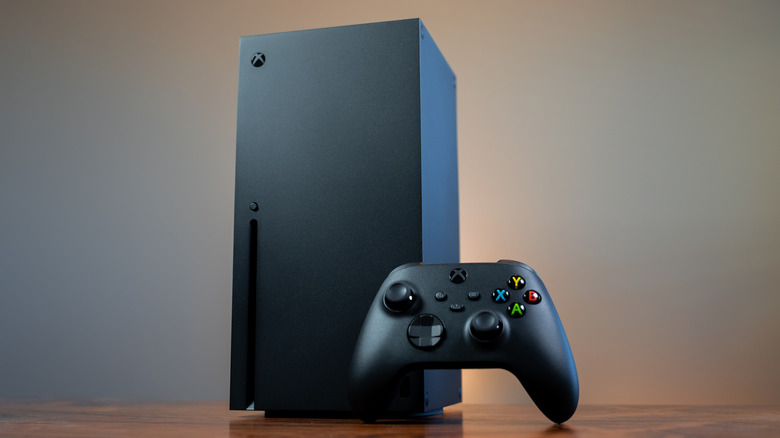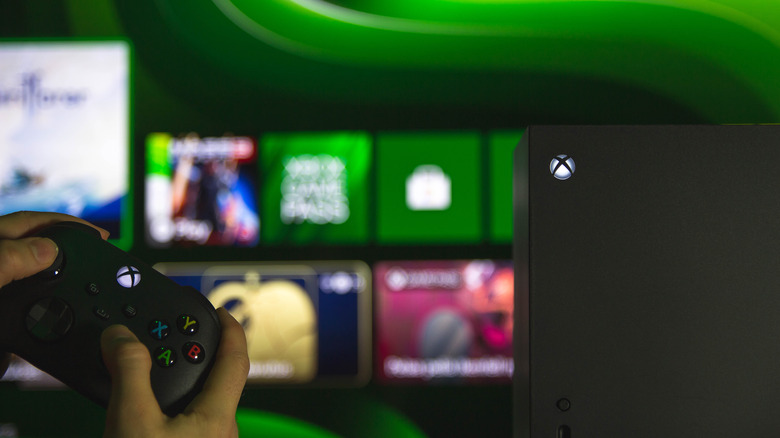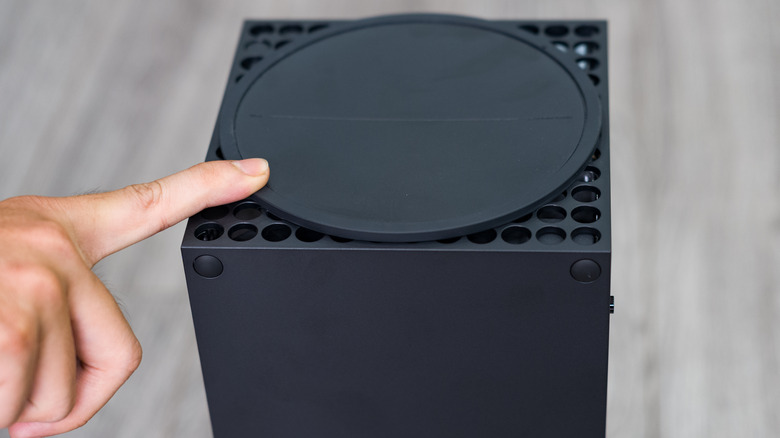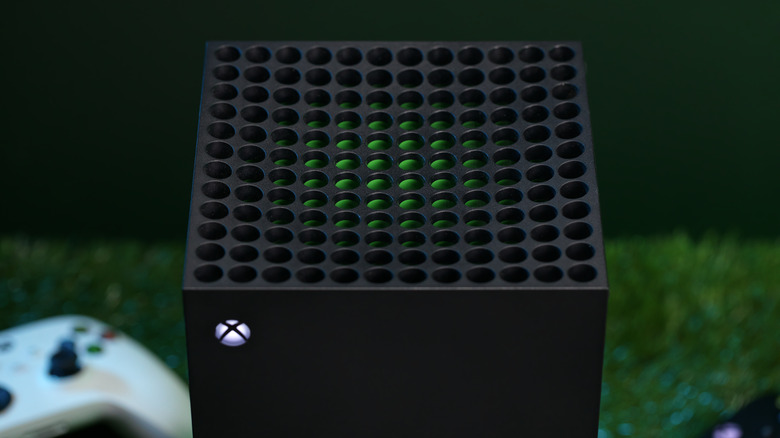Xbox Series X Not Recognizing Discs? Here's How To Fix It
We may not be living through another game-breaking widespread crisis like the Xbox 360's red ring of death, but as with anything you purchase, there's always a chance that your console will malfunction. While the Xbox Series X hasn't presented nearly the same amount or intensity of issues as some of its predecessors, it isn't always perfect, and some gamers have found that out the hard way.
Of those who have experienced issues, a failing disc drive is one of the most common problems with the Xbox Series X to date. Per Polygon, reports of disc drive issues on the Series X ran rampant at the console's launch. We haven't heard much about it lately, though, meaning Microsoft may have fixed any lingering issues after the initial production runs. Still, if something has a moving part, there's always a chance it can break.
Have you found yourself the unlucky victim of an uncooperative disk drive? If you're within warranty, you'll be happy to know that this sort of issue is typically covered and you can have it repaired for free, the only downside being that you'll be without your console for a reasonable period of time. Is the console out of warranty? Don't panic. Before you drop money on a brand new replacement or swear off Xbox for good to join the growing legion of PC gamers, there are some things you can try to fix the issue yourself.
Xbox Series X not reading discs? Try a reset
One of the first things to try if your Xbox Series X is having a hard time reading discs is to perform a hard reset, which is sometimes also called a hard power cycle, according to Microsoft. You can do this by holding the power button on the console for 10 seconds, which will force it to shut down completely as opposed to going into an idle state. This action generally clears the cache and gives you a true reset effect to fix anything that may have gone awry behind the scenes.
As well, the Xbox support website advises users to change the power mode on their console to Energy-Saving as opposed to Instant On, which you toggle by going to Settings, Profile & System, Settings, General, and then Power Mode & Start-up. This setting essentially forces your Xbox to hard reset each time you turn it off, no matter which method you use. Ideally, this will fix your issue permanently, but you'll want to give Microsoft a call if the problem continues.
Do you hear clicking? Is the disc stuck? It may be a hardware problem
You may find that your Xbox Series X won't return your disc, or it may not accept it altogether. Especially if you hear any strange sounds coming from the console as it attempts to handle the disc, this may be indicative of a hardware issue. Before you gut the machine, try other discs to see if the problem persists. If it only happens with a specific disc, you may want to clean it and check for damages. If so, try and return the disc to the store you bought it from for an exchange. Whether you'll be able to do so depends on that store's specific return policy, meaning they likely won't be able to help you if you've had the game longer than a month or two.
If you have a disc that won't eject from the console using the eject button or controller, thankfully there is a manual option. According to Xbox Support, you'll need to unfurl a paperclip that's at least 3 inches long. You'll find the ejection hole near the built-in circular stand on the side that's adjacent to the Xbox Series X's disc drive. Pushing the paperclip in will force the disc to pop out just far enough to pull it with your bare fingers. Carefully grip the disc (preferably with a microfiber cloth or some other protective material) and pull.
If all else fails, pay for a repair
If this issue happens with all games, however, there's likely a problem with the disc drive itself. Unfortunately, this is a much more complicated matter that may require a call to Microsoft. You'll want to exercise that option first and foremost if your console is under warranty.
Even if it isn't under warranty, consider paying any repair costs required before trying DIY methods, as Microsoft will be best equipped to fix your specific problem and will likely give you another warranty period for the repairs. If your warranty has expired and you can't stomach the cost, you can try services like UBreakIFix, which partners with Asurion on out-of-warranty repairs and includes a 1-year warranty.
The truly adventurous can order the parts (if you can find them) and crack open the Series X. The process is doable with the right tools and a little patience, but some soldering is required, according to iFixit. This may be a bit cheaper than getting someone else to repair it, but there's no recourse if something goes wrong and it will void any warranties you may have. Proceed at your own risk if you decide to go the DIY route.



